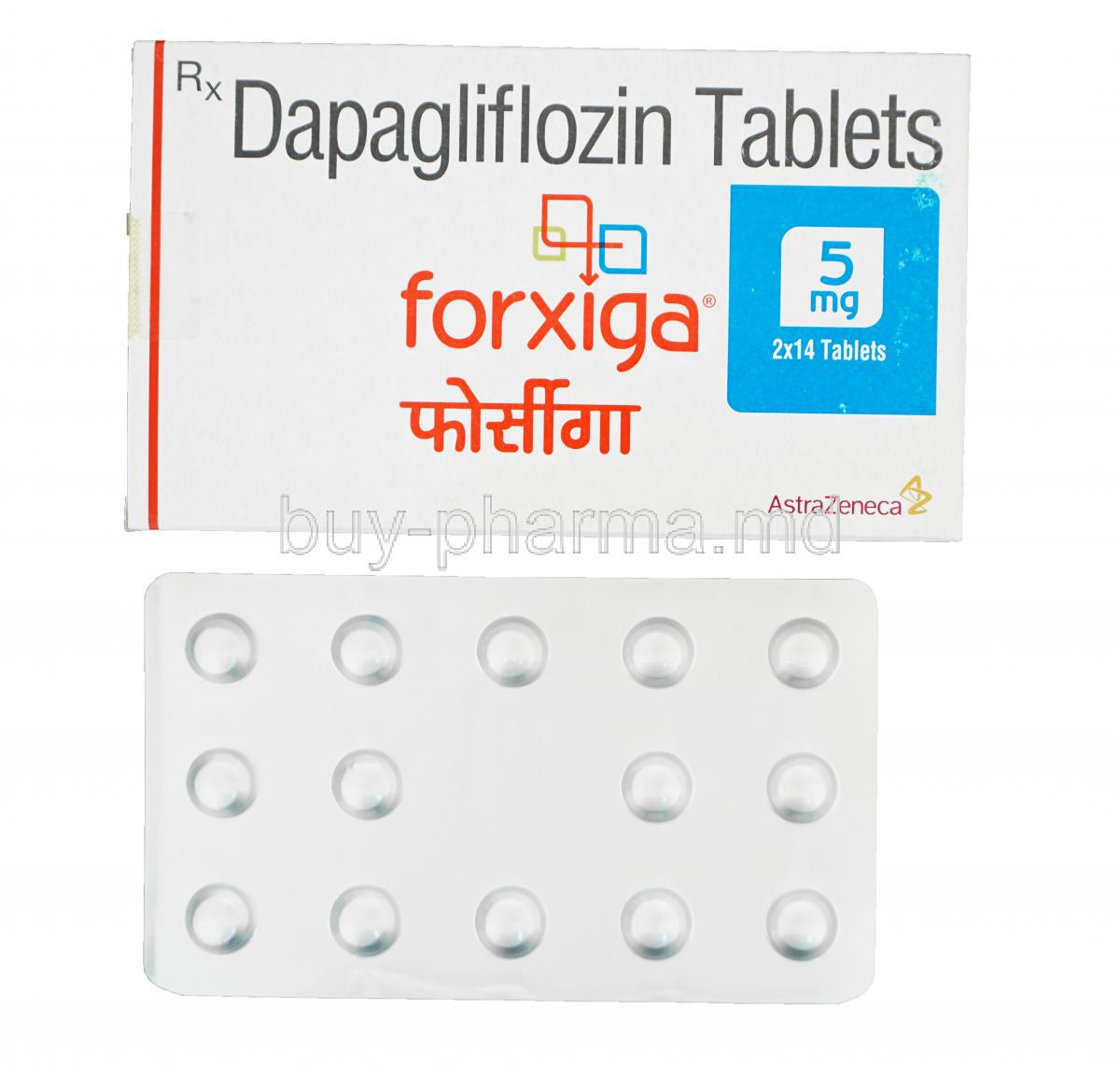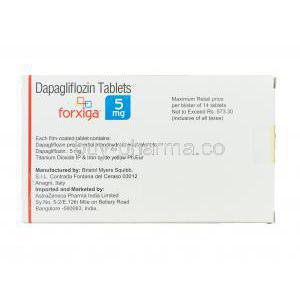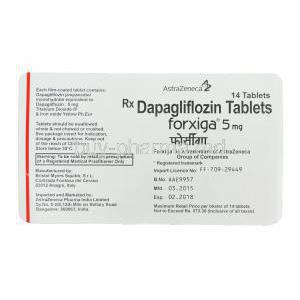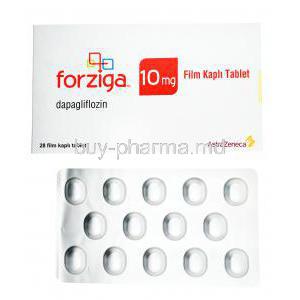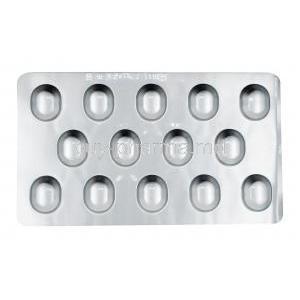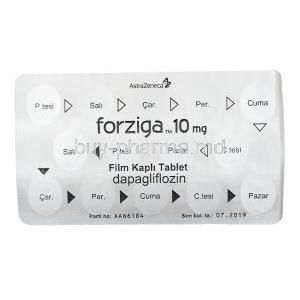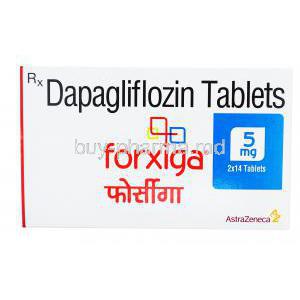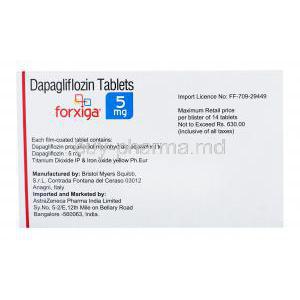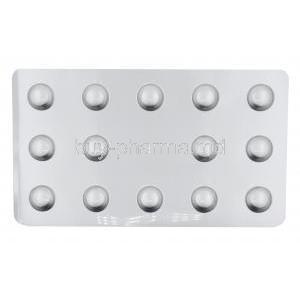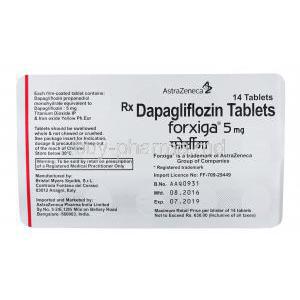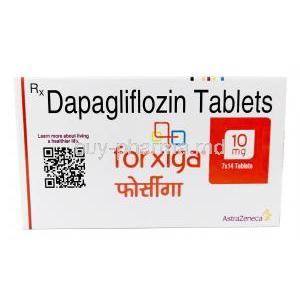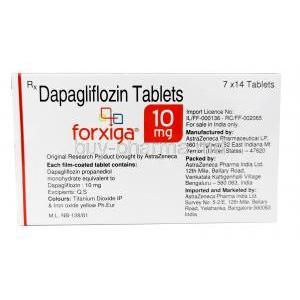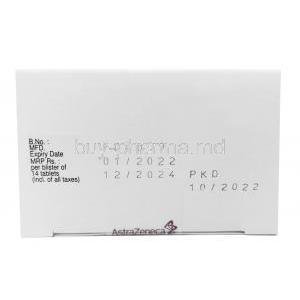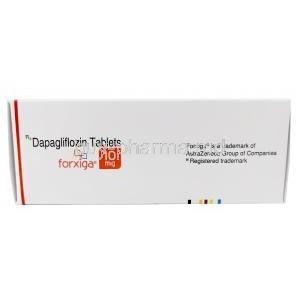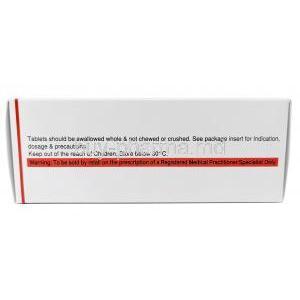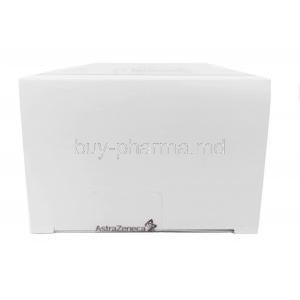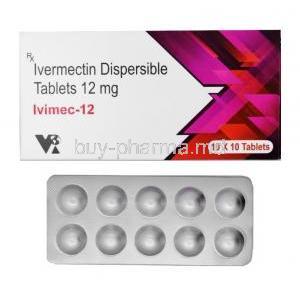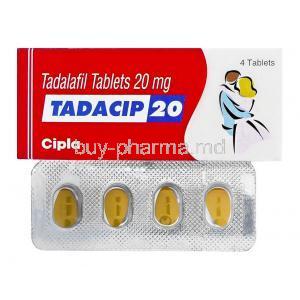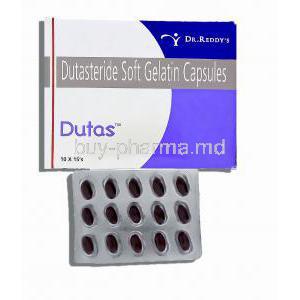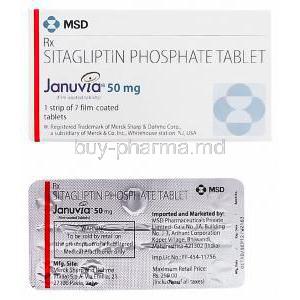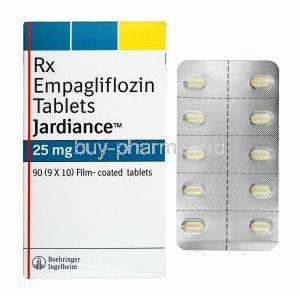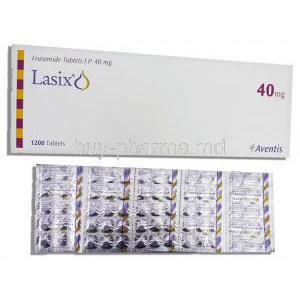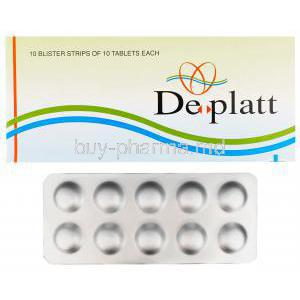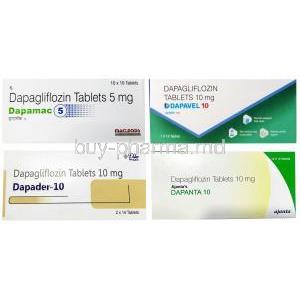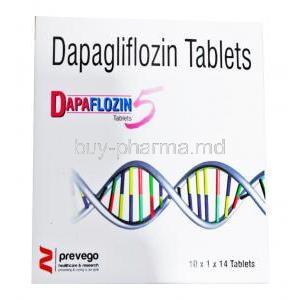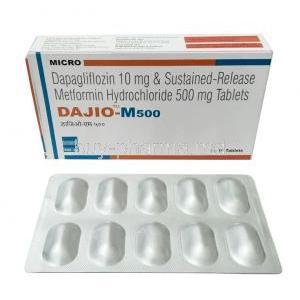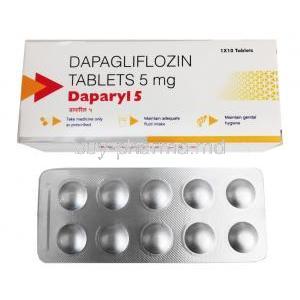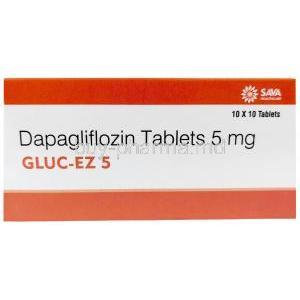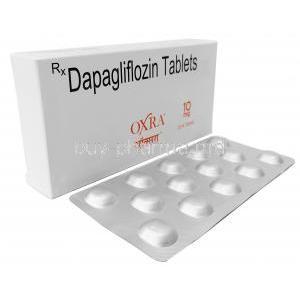1. Introduction to Forxiga (Farxiga in the US)
1.1 Overview and Global Brand Names
Forxiga, known as Farxiga in the United States, is a widely prescribed oral medication primarily indicated for the management of type 2 diabetes mellitus. It is marketed under various brand names across regions, reflecting its global presence in metabolic and cardiovascular therapy. Developed by AstraZeneca, the medication belongs to a newer class of antidiabetic agents with broad-reaching systemic benefits.
1.2 Approval History and Regulatory Status
First approved by the European Medicines Agency (EMA) in 2012 and subsequently by the U.S. Food and Drug Administration (FDA) in 2014 under the trade name Farxiga, this medication has since expanded its label indications. Regulatory agencies in over 100 countries have authorized its use for several chronic conditions, including heart failure and chronic kidney disease, beyond its original glycemic control purpose.
1.3 Therapeutic Classification and Pharmacological Profile
Forxiga belongs to the class of sodium-glucose co-transporter 2 (SGLT2) inhibitors. It reduces glucose reabsorption in the kidneys, promoting glycosuria and consequently lowering blood sugar levels. Additionally, its pharmacological profile includes natriuretic and hemodynamic effects, contributing to its expanding therapeutic utility in renal and cardiac care.
2. Active Ingredient and Composition
2.1 Dapagliflozin as the Primary Active Substance
The primary compound in Forxiga is dapagliflozin, a potent and selective inhibitor of SGLT2. By targeting glucose handling in the proximal renal tubules, it acts independently of insulin, providing a distinct advantage in insulin-resistant states.
2.2 Available Formulations and Strengths
Forxiga is available in film-coated tablets of two standard dosages:
- 5 mg tablets
- 10 mg tablets
These are formulated for once-daily oral administration and are suitable for long-term use in chronic disease management.
2.3 Inactive Ingredients and Excipients
Each tablet contains excipients such as microcrystalline cellulose, lactose monohydrate, and magnesium stearate. The film coating typically includes iron oxide pigments and hypromellose for structural integrity and controlled release.
3. Mechanism of Action: How Forxiga Works
3.1 Role of SGLT2 Inhibitors in Glucose Regulation
SGLT2 inhibitors like Forxiga prevent the reabsorption of glucose in the renal proximal convoluted tubule. This leads to increased urinary glucose excretion and decreased plasma glucose concentrations, without stimulating insulin secretion.
3.2 Renal Glucose Reabsorption Blockade
Approximately 90% of filtered glucose is reabsorbed in the kidneys via SGLT2 transporters. Dapagliflozin inhibits this mechanism, resulting in a net calorie loss, osmotic diuresis, and improved glycemic control.
3.3 Additional Cardiovascular and Renal Protective Effects
Beyond glycemic management, Forxiga offers profound benefits:
- Reduction in cardiovascular mortality in patients with heart failure
- Slowing progression of chronic kidney disease
- Lowering hospitalization rates for heart failure
These pleiotropic effects are independent of glucose lowering and are thought to be mediated via hemodynamic, anti-inflammatory, and metabolic pathways.
4. Approved Medical Uses of Forxiga
4.1 Type 2 Diabetes Mellitus: Glycemic Control
Forxiga is indicated as monotherapy or in combination with other antidiabetic agents for adults with type 2 diabetes inadequately controlled by diet and exercise. It effectively reduces HbA1c and supports weight loss and blood pressure reduction.
4.2 Heart Failure with Reduced Ejection Fraction (HFrEF)
In patients with HFrEF, Forxiga significantly reduces the risk of cardiovascular death and hospitalization. It is approved for both diabetic and non-diabetic individuals, establishing it as a cornerstone therapy in modern heart failure management.
4.3 Chronic Kidney Disease (CKD): Progression Delay and Renal Protection
Forxiga is approved to reduce the risk of sustained eGFR decline, end-stage kidney disease, and renal death in adults with CKD. It is especially beneficial in patients with albuminuria and diabetic nephropathy, offering nephroprotection regardless of glycemic status.
5. Off-Label and Investigational Uses of Forxiga
5.1 Heart Failure with Preserved Ejection Fraction (HFpEF)
Although not yet universally approved, Forxiga shows promise in HFpEF, a notoriously treatment-resistant condition. Ongoing studies suggest improvements in symptoms and quality of life.
5.2 Type 1 Diabetes Mellitus (Limited Approval in Some Regions)
In some jurisdictions, Forxiga is approved as adjunct therapy in select patients with type 1 diabetes who exhibit obesity or insulin resistance. Close monitoring for ketoacidosis is mandatory in this use case.
5.3 Obesity Management and Weight Reduction Potential
Due to its caloric loss via glycosuria and mild appetite suppression, Forxiga has been investigated for weight loss in non-diabetic individuals. Clinical trials indicate modest but sustained reductions in body weight and visceral fat.
5.4 Polycystic Ovary Syndrome (PCOS) and Insulin Resistance
Forxiga is being explored as a therapeutic candidate in PCOS to improve metabolic profiles, reduce insulin levels, and support ovulatory function, particularly in overweight patients with insulin resistance.
5.5 Non-Alcoholic Steatohepatitis (NASH)
Emerging data support dapagliflozin’s potential in NASH by improving hepatic steatosis, reducing inflammatory markers, and enhancing insulin sensitivity. It is under active investigation in phase II and III trials.
6. Dosage and Administration Guidelines
6.1 Standard Dosing for Adults Across Indications
The typical starting dose is 10 mg once daily for all approved indications. In type 2 diabetes, it may be used alone or with metformin, insulin, or other oral agents.
6.2 Dose Adjustments in Renal or Hepatic Impairment
In moderate renal impairment, cautious use is advised. Forxiga is not recommended in patients with eGFR <25 mL/min/1.73m². Hepatic dysfunction may alter drug metabolism, necessitating clinical discretion in severe cases.
6.3 Administration Timing: With or Without Food
Forxiga can be taken with or without meals. Consistency in daily timing is encouraged to maintain steady plasma levels.
6.4 Missed Dose and Overdose Protocol
If a dose is missed, it should be taken as soon as remembered unless it is close to the next dose. In overdose scenarios, supportive measures and fluid replacement may be required due to the risk of dehydration and glycosuria-induced electrolyte imbalance.
7. Common and Serious Side Effects of Forxiga
7.1 Common Side Effects: Urinary Tract Infections, Thirst, Polyuria
Frequent adverse effects include:
- Increased urination (polyuria)
- Genital mycotic infections
- Thirst and mild dehydration
These effects stem from enhanced urinary glucose excretion.
7.2 Less Common but Serious Adverse Reactions: Ketoacidosis, Urosepsis
Rare but critical events may include:
- Euglycemic diabetic ketoacidosis
- Severe urinary tract infections including pyelonephritis
- Necrotizing fasciitis of the perineum (Fournier’s gangrene)
7.3 Long-Term Tolerability and Monitoring Considerations
Routine renal function monitoring is recommended, especially in patients with concurrent diuretic therapy. Liver enzymes and electrolytes should be periodically assessed to detect subclinical abnormalities.
7.4 Managing Adverse Reactions in Clinical Settings
Patient education on hydration and genital hygiene reduces infection risk. Temporary discontinuation may be warranted during acute illness, surgery, or episodes of hypotension. Prompt recognition of ketoacidosis symptoms is essential for early intervention.
8. Drug Interactions and Compatibility
8.1 Concomitant Use with Insulin or Sulfonylureas: Hypoglycemia Risk
While Forxiga itself does not cause hypoglycemia, its use with insulin or sulfonylureas may amplify the risk. Dosage adjustments of the latter agents may be necessary.
8.2 Diuretics and Volume Depletion Concerns
Co-administration with loop or thiazide diuretics increases the risk of intravascular volume depletion and hypotension, especially in elderly or renally compromised patients.
8.3 Interaction with Antihypertensives and RAAS Inhibitors
Combined use with ACE inhibitors or ARBs enhances renal protective synergy but may require monitoring for hypotension and electrolyte shifts.
8.4 CYP Metabolism and Effects on Other Medications
Dapagliflozin is minimally metabolized by CYP enzymes and has a low potential for drug-drug interactions via hepatic cytochrome pathways. Nonetheless, care should be taken when prescribing alongside agents affecting renal hemodynamics.
9. Warnings, Contraindications, and Precautionary Notes
9.1 Contraindications: Type 1 Diabetes (in Most Regions), DKA History
Forxiga is contraindicated in individuals with type 1 diabetes mellitus due to an increased risk of euglycemic diabetic ketoacidosis (DKA). Patients with a prior history of DKA—regardless of type—should not be prescribed dapagliflozin, as the mechanism of action can exacerbate ketone body production even in the presence of normal or mildly elevated glucose levels.
9.2 Black Box Warnings and FDA/EMA Advisories
While Forxiga does not currently carry a black box warning from the FDA, regulatory agencies such as the EMA have issued strong advisories concerning the potential for life-threatening infections, notably Fournier’s gangrene. Healthcare professionals are urged to counsel patients on early symptom detection and to immediately discontinue therapy if necrotizing fasciitis of the perineum is suspected.
9.3 Risk of Genital Infections and Fournier’s Gangrene
The increased urinary glucose concentration resulting from SGLT2 inhibition creates an optimal environment for yeast and bacterial proliferation in the genitourinary tract. This may manifest as:
- Vulvovaginal candidiasis
- Balanitis
- Recurrent urinary tract infections
Although rare, Fournier’s gangrene—a necrotizing infection of the perineum—has been reported and demands urgent medical attention. Patients should be educated on the importance of personal hygiene and reporting signs of erythema, tenderness, or fever.
9.4 Caution in Volume-Depleted or Hypotensive Patients
Due to its osmotic diuretic effect, Forxiga may exacerbate dehydration and lead to symptomatic hypotension, particularly in:
- Elderly patients
- Patients on loop or thiazide diuretics
- Individuals with low baseline blood pressure or volume depletion
Hydration status should be assessed prior to initiating therapy, and patients should be advised to maintain adequate fluid intake, especially in hot climates or during intercurrent illness.
10. Special Populations and Careful Administration
10.1 Use in Elderly Patients: Renal Function Monitoring and Fall Risk
Renal function naturally declines with age, and elderly patients are more susceptible to drug-induced nephropathy. Forxiga should be used with caution in individuals over 65, with baseline and periodic assessment of eGFR and electrolyte levels.
Additionally, the potential for postural hypotension may increase fall risk. Monitoring of orthostatic blood pressure and reinforcement of hydration strategies are recommended during initiation and dose titration.
10.2 Administration in Pregnant Women: Fetal Safety and Alternatives
Forxiga is not recommended during the second and third trimesters of pregnancy due to potential risks to fetal renal development. Although human data are limited, animal studies have shown adverse effects on kidney maturation and growth retardation.
Alternative agents with a better-established safety profile during pregnancy—such as insulin or metformin—should be considered. Forxiga should only be used if the potential benefit justifies the potential risk to the fetus.
10.3 Lactating Mothers: Excretion in Breast Milk and Infant Safety
Dapagliflozin has been detected in the milk of lactating animals, and its presence in human breast milk cannot be excluded. Due to the risk of hypoglycemia and renal impairment in the nursing infant, breastfeeding is not recommended during therapy with Forxiga.
If therapy is deemed essential, alternative feeding methods should be advised to mitigate infant exposure.
10.4 Pediatric Use: Safety and Efficacy in Children and Adolescents
The safety and efficacy of Forxiga in patients under 18 years of age have not been fully established. Although clinical trials are ongoing, current labeling does not recommend use in pediatric populations.
In rare instances where it may be considered, such use should be confined to controlled environments with rigorous metabolic monitoring and ethical oversight.
11. Guidelines for Overdose Management
11.1 Symptoms of Dapagliflozin Overdose
Overdosage may present with exaggerated pharmacodynamic effects, including:
- Polyuria and dehydration
- Hypotension
- Electrolyte disturbances
- Potential risk of ketoacidosis even with normal blood glucose
11.2 Recommended Supportive Treatments
There is no specific antidote for dapagliflozin. Treatment is supportive and symptom-driven:
- Intravenous fluid resuscitation to correct volume depletion
- Electrolyte monitoring and replacement
- Glucose and ketone level monitoring
In cases of suspected ketoacidosis, insulin therapy and hospitalization are indicated regardless of glucose level.
11.3 Hospitalization and Monitoring Parameters
Patients with significant overdose symptoms should be monitored in an inpatient setting with:
- Serial electrolyte and renal function tests
- Vital signs and orthostatic blood pressure monitoring
- Assessment for signs of DKA: ketonemia, acidosis, nausea
Discharge should only occur once the patient is hemodynamically stable and renal markers have normalized.
12. Storage and Handling Recommendations
12.1 Recommended Storage Temperature and Humidity
Forxiga should be stored at a controlled room temperature between 20°C to 25°C (68°F to 77°F). Brief excursions are permitted between 15°C and 30°C (59°F to 86°F), provided they do not exceed more than 24 hours.
Tablets should be kept in their original packaging to protect from light and moisture.
12.2 Shelf Life and Expiration Handling
The shelf life of Forxiga is typically 24 to 36 months from the date of manufacture. Expired medication should not be consumed, as potency and safety cannot be guaranteed beyond the labeled expiration date.
Unused or expired tablets should be disposed of in accordance with local pharmaceutical waste regulations. Flushing down the toilet is not recommended unless instructed by authorities.
12.3 Safe Handling Precautions in Clinical and Home Settings
Although Forxiga tablets pose minimal risk upon direct contact, basic precautions should be followed:
- Wash hands after handling tablets, especially in clinical settings
- Store away from children and pets in a secure, dry location
- Do not crush or split tablets unless advised by a healthcare provider
In shared households with pregnant women or lactating mothers, additional care should be taken to prevent inadvertent exposure.

